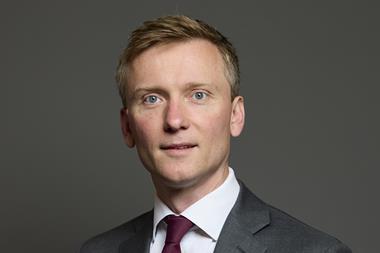This is an eventful period in Belgian pensions. “We are extremely busy,” says Hugo Clemeur, general secretary of the Belgian Association of Pension Funds (BVPI/ABIP). “Our new pension funds legislation was passed by the lower house before summer break and is now due to be considered by the Senate. But we expect this to be a formality and the law to come into effect at the beginning of next year.”
In essence the law is aimed at achieving the current Holy Grail of the European pensions industry, the establishment of a legislative framework to enable pan-European pension funds to operate in and from the country. To this end it creates the first Belgian purpose-built vehicle for occupational pension provision, the organisme pour fonds pension (OFP), and introduces the EET pension taxation system for OFPs, removing an annual 0.17% tax on pension fund capital and lifting capital gains tax.
“It creates a very flexible framework to set up a pan-European pension fund,” says Clemeur. “For existing pension funds it means adapting themselves to new rules, but that won’t be much of a problem. It also implements the EU directive so enables a move from a somewhat stricter investment environment to the prudent person regime. And it will make the market more transparent from a tax point of view. So while it will take a while to see all the effects, on the whole it’s very positive development for the Belgian pension industry.”
“We are very happy with the new law, especially the new tax status which will be a big help to all pension funds,” agrees Edwin Meysmans, managing director and pension fund secretary of corporate DB pension fund of KBC. “But what we are still concerned about is a separate circular from our regulator on the corporate governance of a pension fund. We already have to have an external auditor and an actuary but on top of that they will want every pension fund to appoint an internal auditor and an internal compliance officer. That may be OK for the larger funds because they have a large sponsor where they can find some people to do this work. But it would not suit the vast majority of smaller pension funds we have in Belgium where employers may decide there is too much administration which is going to cost money and so prompt them to consider the insurance alternative.”
And in many ways the legislative and regulatory situation mirrors pension fund performance, where an upturn has been followed by uncertainty. “From a financial point of view 2005 was very good,” says Clemeur. “The previous two years were not bad, with returns of around 8-9%, but last year we had an overall return for the industry of nearly 15%, which was certainly the best year since the end of the 1990s.”
But performance this year has been unsettling. “The general feeling is that the return in the first half will have been closer to 0%,” Clemeur adds. “But on the whole we are not too worried about that because we really look at the long-term and pension funds traditionally don’t react very nervously about moods in the market. They just ride it out.”
Meysmans confirms that picture: “Our pension fund had an excellent 2005 with a return of 18.38%. The main reason we did better than the average was our higher equity allocation. At the end of 2005 we were close to 59% in equities, whereas the average for Belgian pension funds in equities was around 44%. Given what equity markets did, especially Europe where it was plus 25% whereas bond markets in Europe did plus 5%, there was 20% a difference. At the end of 2005 we had 59% in equities, 32% in bonds, 7% in real estate and 2% in cash.”
But 2006 has not been so good. “We had a very good start. January and February were good months, March so-so. But then we lost almost all of it in May so that by the end of June we were very slightly positive, plus 0.5%, at the end of the first half.”
So over recent years have Belgian pension funds adapted their asset allocation to the radical changes in market conditions since the beginning of the decade?
“Well, that is the remarkable thing; over the years there have been very few changes in the asset allocation,” says Clemeur. “It’s always a very well-balanced portfolio of more or less 40% each for bonds and equities and the rest in cash, liquidities, real estate and so on. You really have to go back more than 15 years to see significant changes, when we had perhaps 80% in bonds.”
“My overall view is that there was not much change,” says Koen de Ryck, chairman and managing director at Pragma Consulting. “And I am surprised that there were not many active decisions in asset allocation last year. There was a lot of talk about alternatives, for example, but apart from one or two they did not do much. A few have committed to commodities through futures and fewer than I can count on one hand have engaged in hedge funds through funds of hedge funds. I don’t see much change as long as we have low interest rate levels, even if they have been rising somewhat. Equities have become more uncertain, more volatile, and listed real estate is very expensive so I do not anticipate that these positions will be increased.”
However, Régis Renard, senior consulting actuary at Aon Consulting Belgium, does detect some changes in mentality. “With the deterioration in returns in the first part of 2006 compared with 2005 and certainly after the negative returns of 2000-2002, we are seeing a growing awareness by pension funds about asset allocation and that a good year can be followed by bad years,” he says. “Increasingly pension funds will be interested in ALM techniques and certainly the larger funds will perform such an analysis to test whether their asset allocation is robust enough to survive events like turmoil in the financial markets. That’s certainly a trend. And the regulatory authorities are also more interested in such techniques as a tool that can make pension funds more secure from a prudential point of view.”
“We have already set a new strategic asset allocation as a result of our ALM study which we do every three years,” says Meysmans. “It took a bit longer this time because the involvement of the sponsor, the KBC banking group, was much larger because of the new international accounting standards under which it is taking all this volatility of the results of the pension fund on their own balance sheet. As a result we have reduced equity allocation to 50%, increased our allocation to bonds to 40% and raised our allocation to real estate to 10%.”
And there are developments on the sectoral front, which was created by the so-called Vandenbroucke Law of 2003 that allowed for the establishment of industry-wide second pillar funds organised on a not-for-profits basis.
“We have a contract with the insurance company that runs until the end of 2007 but starting in 2008 we have the opportunity to change,” says Johan Vanbuylen, director of FBZ Elektriciens, the electrical sector pension plan. “We can become a separate pension fund or choose another insurance product either our current partner or with another insurance company - it’s up to us. But while we have a committee that overseas the investments the insurance company owns the fund and we only have an advisory voice. That’s one of the reasons we will probably not continue in this combination after 2007.”












No comments yet